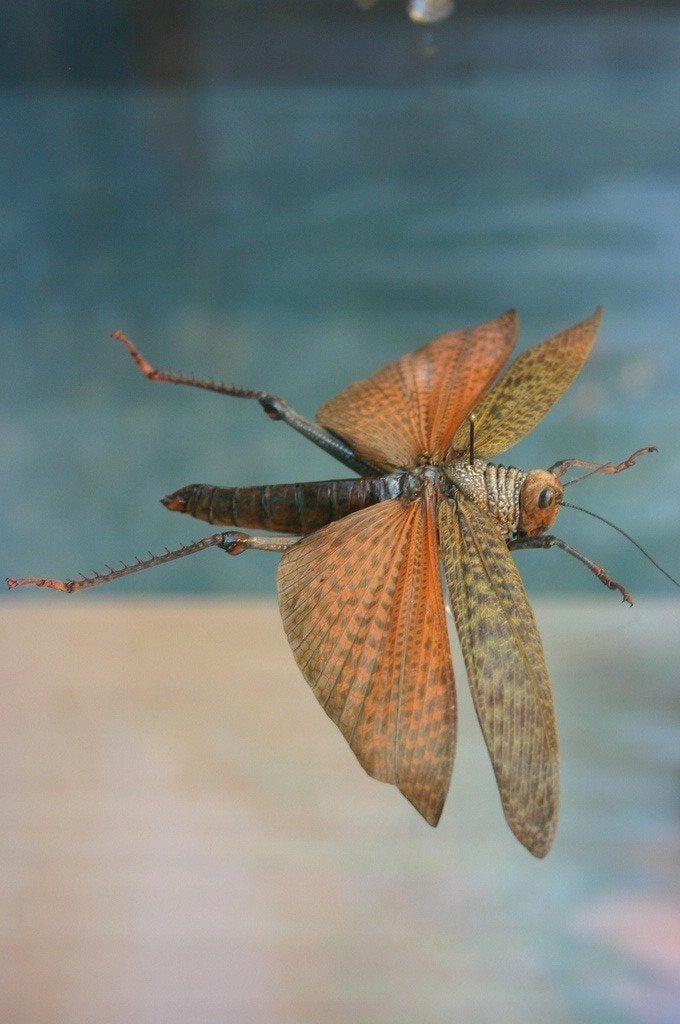
A cockroach crunched underfoot may not seem like a model of strength, but scientists have discovered that bug skeletons are tougher than we think. Insects and spiders shield themselves in slick external skeletons made of cuticle, one of the most common natural composites on the planet.
Composed mostly of a carbohydrate called chitin, insect cuticle differs from keratin-based human cuticle, the tough skin at the base of our fingernails. Researchers knew little about how this ubiquitous material holds up under pressure, so they plucked hind legs from living locusts and bent them until they snapped.
A locust's hind leg buckling under compression, Dirks & Taylor 2012. Video courtesy Jan-Henning Dirks.
They also nicked the tube-like legs to test their resistance to defects. Cuticle's flexibility, combined with its high tolerance for cracks, meant that a remarkable 5.56 kJm of energy was needed to rip the material apart, the team reports online today in The Journal of Experimental Biology. This is more energy than is needed to tear cast iron, and makes cuticle one of nature's toughest composite materials: it's sturdier than bone, and on par with bone-based antlers and keratin-sheathed horns.
Locusts need such strong legs to withstand high-impact jumps and deliver defensive kicks—something else to fear if they take the world by swarm.
See more ScienceShots.
ScienceNOW, the daily online news service of the journal Science